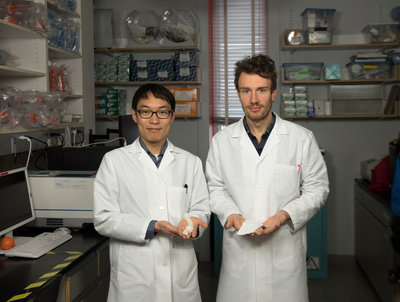A team of scientists has found a way to heal burns and other wounds using nanofibers similar to infant skin, in order to quicken treatment without too much scarring.
Kit Parker was a soldier in Afghanistan in 2003 when a boy who was badly wounded came in. He did not survive, and the experience motivated Parker to return to his civilian job as a biophysicist at Harvard University, NPR reports. He said, “It was the most scarring event of the war for me.”
He formed a team, and capitalized on a discovery in the 1970s and 1980s that surgeries conducted on babies in the womb showed a lot less scarring. One reason for this is that infant skin contains large amounts of fibronectin.
Christopher Chantre, a graduate student and researcher in Parker’s lab, said,
Our idea was to actually try to replicate this fibronectin-rich environment to get a better healing process.
The scientists had to find a way to spin fibronectin into very thin strands called nanofibers, using a high-tech cotton candy machine. They then used this material as dressings for wounds on mice. The wounds healed faster, and with very little scarring.
Chantre said, “The wounds treated with fibronectin closed at around Day 11 and the control was several days later — at, on average, Day 14.” Most impressively, the new skin was similar to healthy skin, even containing hair follicles.
A second study from Parker’s lab showed how nanofiber helped wounds heal quickly. Seungkuk Ahn, lead author on the study, said, “This nanofiber is made of cellulose and soy protein.” The soy protein releases a form of estrogen “so the bandage generates new tissue formation.”
Fibronectin is more efficient at reducing scarring, but the soy wound dressing is far easier and cheaper to make, which would make it suitable for large wounds.
Parker says that these bandages are a big step forward, but they only represent a small step towards helping kids like the one he saw years ago. He said, “I don’t know if my technology would have helped that night. I doubt it.” But he hopes that this will save more children in the future.
The study was published in Biomaterials.
























